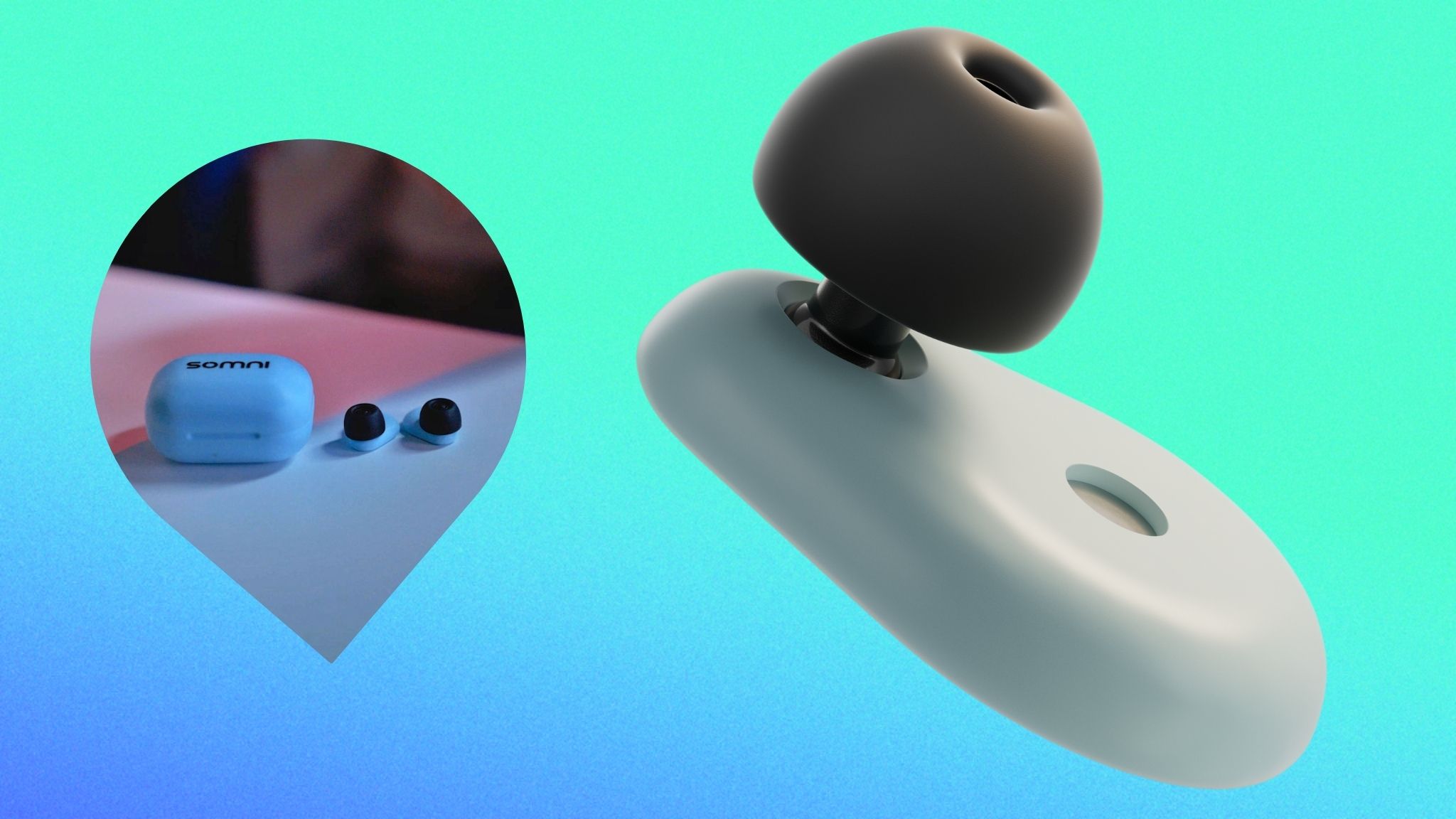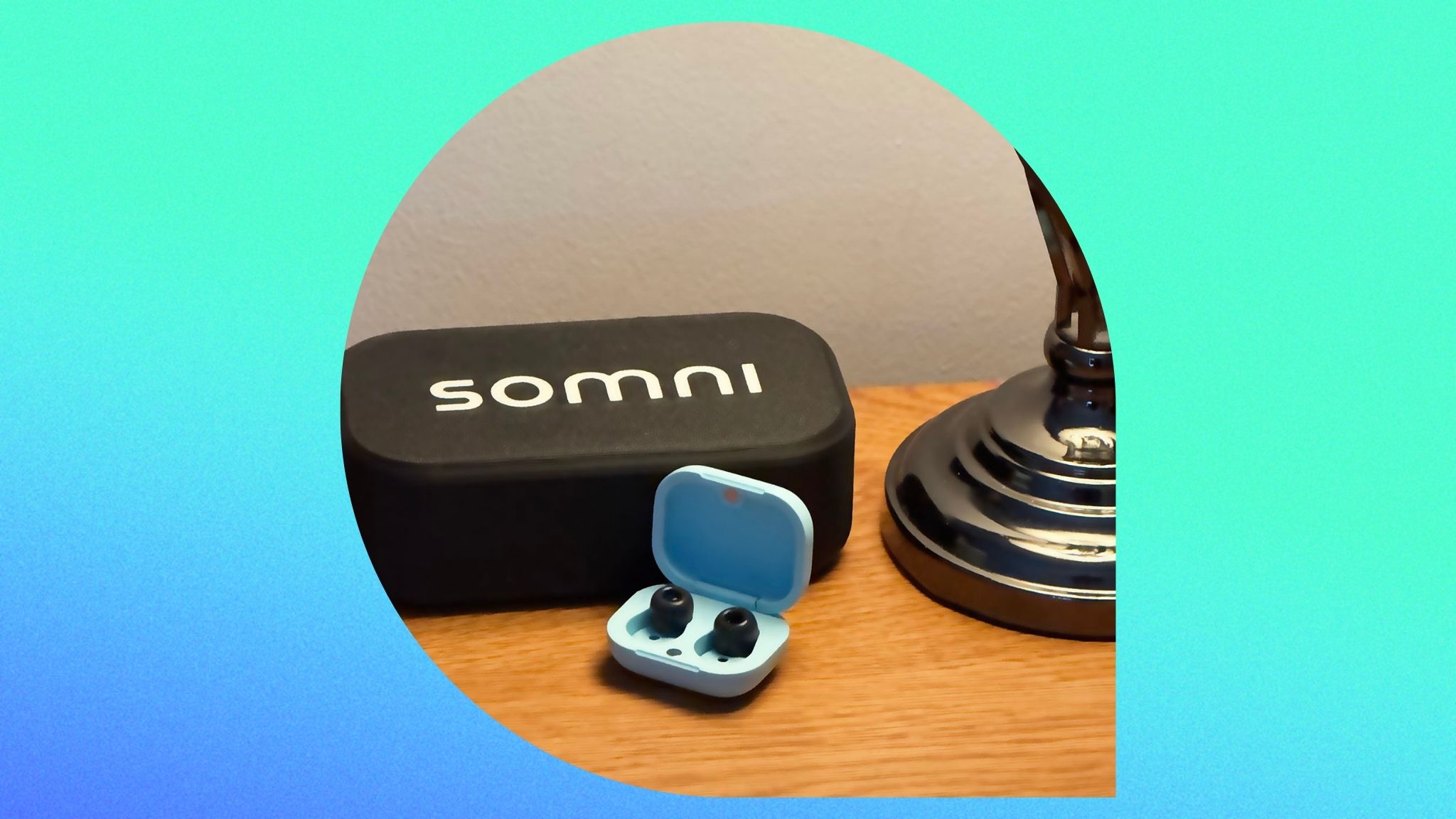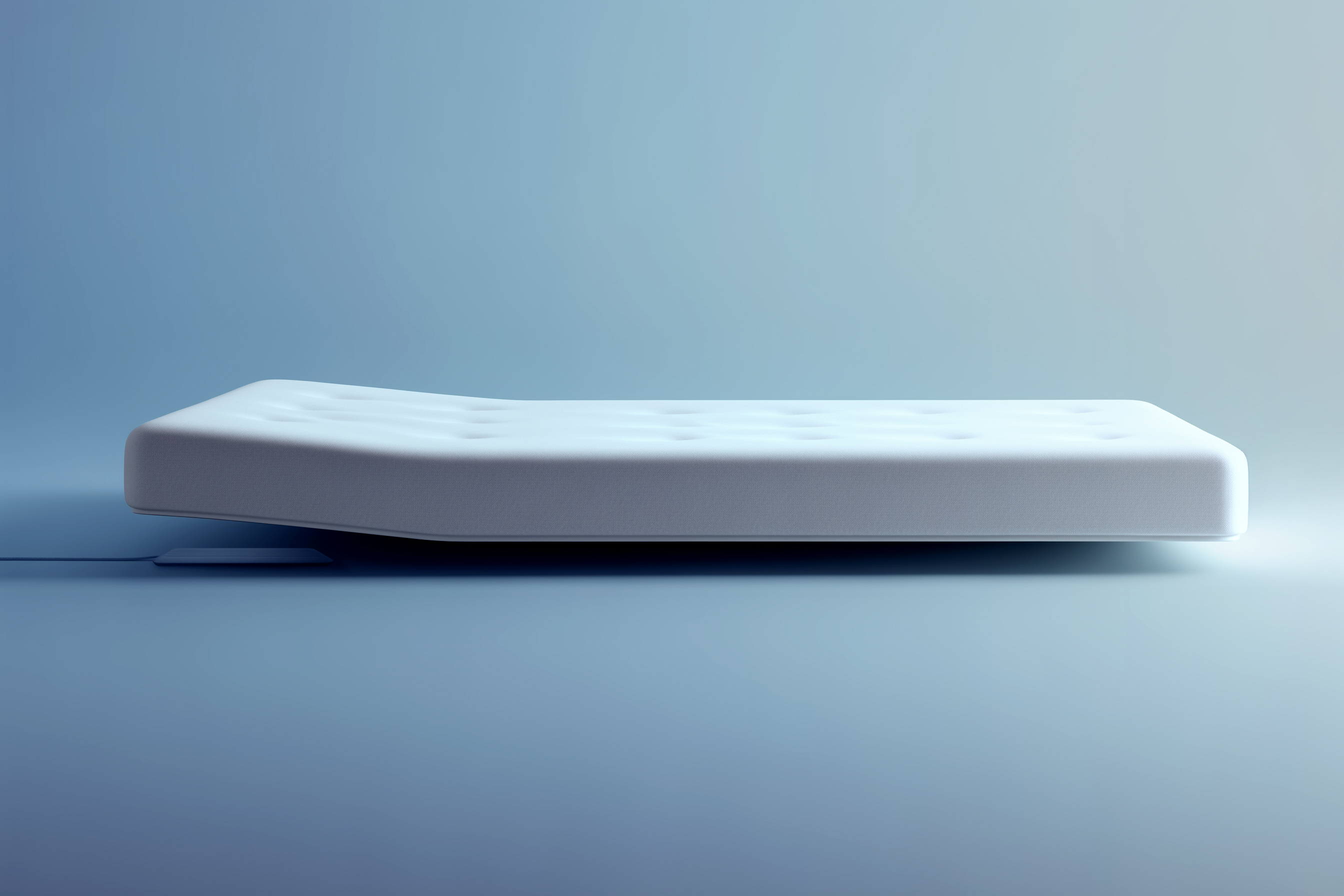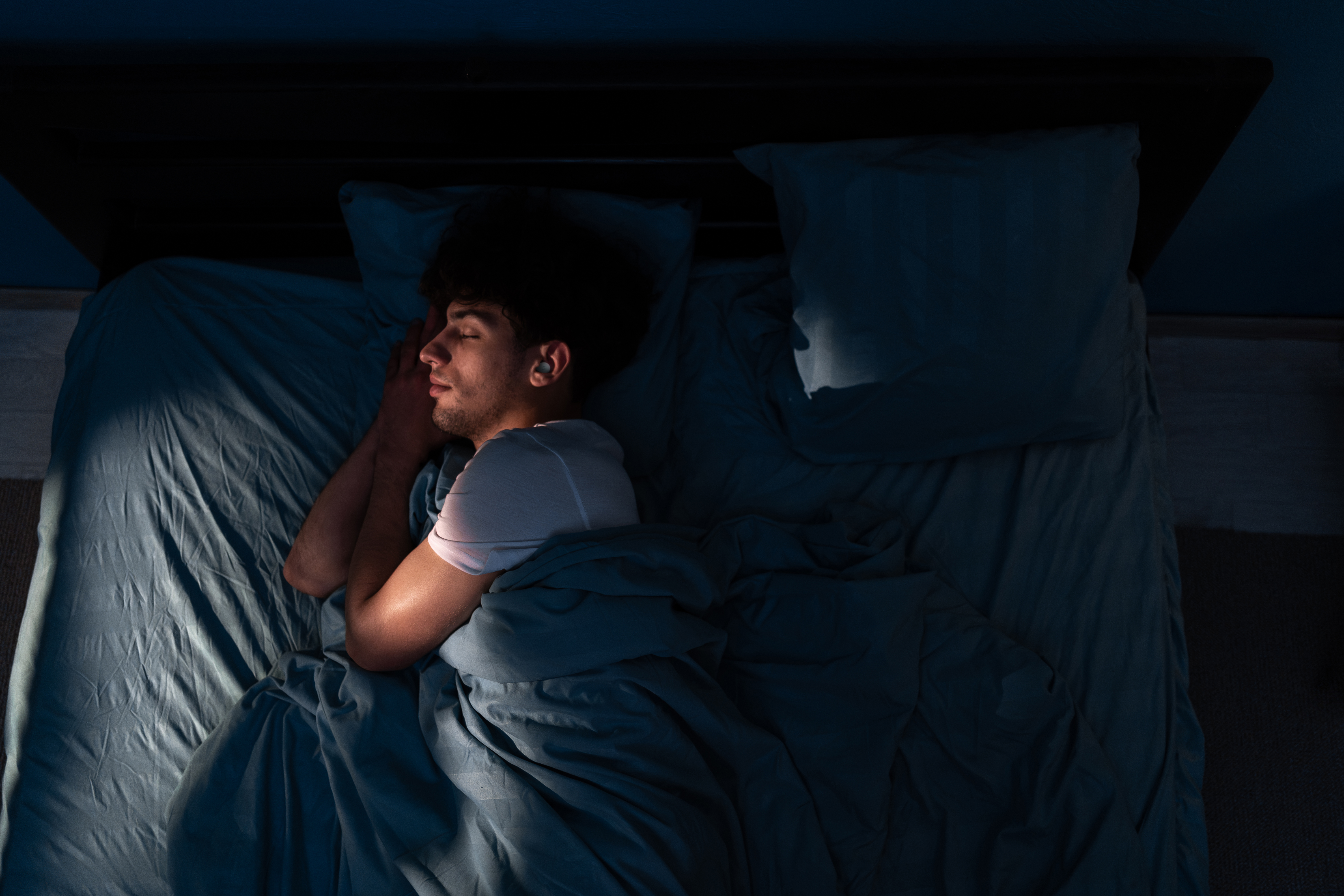Hands-on: SomniBuds are battery-free wireless earphones for sleeping — and may block out snoring sounds forever, once and for all
Marriage-saving earbuds make ingenious use of re-imagined audio technology


If you’re reading this with bags under your eyes, then, on behalf of snorers worldwide: I apologise. We can’t help it. We know the crime — your head hits the pillow, dreamland calls you... and then the washing-machine rhythmic rumble of your partner's snoring kicks in. It's an age-old bedroom battle, and one in which there are no winners. Many gadgets over the years have tried to come to the rescue — the latest being sleep-oriented headphone devices. But too often they’ve been more hangman than sandman, ending up as bulky, battery-dead contraptions that are more of a headache than a help.
But a new British startup claims to have found the secret to a lifetime of snore-free sleep. Well — at least ‘snore-free’ in terms of discreetly drowning out the drone. It’s created the SomniBuds, a pair of tiny earbuds that promise endless, all-night audio without the need for charging, ever. Without the need for batteries at all, in fact.
Designed by father-and-son team Keith and Charles Phillips, the idea was first envisioned as an audio system for inside motorcycle helmets (Keith has worked in the EXTREMELY NOISY motocross industry for many years), before the 'light-bulb-moment' application for a bedtime product became clear.
“When I put it in and then we did a global search, I was kind of shocked that nothing came back,” says Keith. “No one's done this before."
Does it all sound too good to be real? We’ve been living with a prototype pair of the SomniBuds for just over a week now, ahead of its Kickstarter campaign kicking off. And yep, we can confirm — it’s more than good enough, and very, very real.

How the SomniBuds work
Here’s the rub with existing sleep headphones: In order to make use of a wireless Bluetooth design to keep you from strangling yourself with headphone cabling in the night, they need to include a battery. That gives them the sort of bulk that side-sleepers just can’t stand, pushing into their ears uncomfortably as they lie down. But make the batteries too small and you run into another problem — the earbuds run out of power too quickly and, due to the nature of lithium ion rechargeable batteries, are quick to die altogether due to repeated charging cycles.
"If you think about what's in a normal earbud [they're] still four times bigger than what we’ve got here."
Keith Phillips
The SomniBuds answer this problem with a patented, battery-free design.
Get exclusive shortlists, celebrity interviews and the best deals on the products you care about, straight to your inbox.
“What we've done is solved the two, real big problems,” Keith tells me when we meet for a demo in East London.
“First is battery life, because we don't have one, and the second one is comfort, because if you think about what's in a normal earbud — you've got the diaphragm, the coil, the magnet, a Bluetooth receiver, a micro amplifier and the battery — even if they make that all really tiny, it's still four times bigger than what we’ve got here.”
Instead of squeezing an uncomfortable battery into each earbud, the buds pair with a device called the SomniMat. This thin mat covers magnetic coils in a soft fabric, and can slide under your pillow or mattress. The mat then uses magnetic induction waves to wirelessly transmit both power and audio to the earbuds. This means they never run out of juice and don't need to be charged.
There’s a clever application of physics at work here, but in layman's terms, it’s a bit like blowing up a speaker, and putting your head right in between the myriad components that make them up. The speaker cone, the part of a regular speaker that vibrates to make sound, is here separated from the part that needs to be wired and directly powered.It means the SomniBubs earbuds can be incredibly tiny, light, and comfortable for all-night wear.
There are still chips and circuitboards involved, but these are all housed in a separate 'SomniMate' powered basestation that hooks up to the mat over a single thin wire. It’s to this box that you connect your streaming device of choice over Bluetooth, whether that’s a phone, a smart speaker or even a TV — meaning you can get the audio from basically any service you want, right through the night, without disturbing anyone sharing the room with you. Considering some sleep buds are limited to just a select library of sounds, this is great.

What they’re like to use
When I first saw the press release for the SomniBuds, I read with eyebrows very much raised. It sounded like impossible sci-fi tech. But the concept very much works — though it’s quite a different experience to using standard earbuds.
The earbuds themselves are truly tiny — with a 3mm ear-tip post tipped with audiophile grade memory foam and sitting on a ball-joint socket, they’re able to go deep enough into your ear canal to block out sound without the need for noise cancellation technology (which, given the space limitations here, isn’t present, and wouldn’t be particularly good at blocking the irregular sound patterns — such as noisy neighbours or snoring — that disturb sleep, anyway). Their resonant discs are able to sit plush in your outer ear, meaning they’re pleasant enough for side-sleepers to use, too — you won’t ever forget they’re inserted, but it’s much more comfy than any other buds of this ilk I’ve tried. And, as it’s still in a ‘hand-made’ 3D printing prototype stage, there’s room for further refinements in this regard, too.

Things feel more unusual when you actually lay down to listen to the SomniBuds. The electromagnetic resonance they use to produce volume is proximity based — so the further you are away from the mat, the quieter the audio will appear. Get up close and you can get the full range of volume boost your streaming device can provide, while moving away sees the audio fade like a radio station lost travelling through a tunnel, going silent at a distance of about two feet from the mat. You’ll also be aware of the sense of minute vibrations being used to create the sounds — though this is neither unpleasant nor distracting.
You will note that the buds are mono-only though, and this is for a practical reason — stereo sound would require double the amount of magnetic coils in the mat, and side sleepers would find that the volume of the earbud (and corresponding stereo channel) closest to the mat would dominate the mix. And though another bout of tuning is underway before mass production, there’s no attempt here to fulfil the audio quality expectations of audiophiles — these are specifically designed as a sleep aid rather than for critical listening sessions. Not that the SomniBuds sound bad! It’s just that they’d sound quite basic against regular earbuds, not taking into account the specific innovations that their intended use case sees them excel with. There’s no other earbuds out there that work like this, and in use you start to see why they’ll be hard to beat in a sleep scenario.
Dreamland awaits
There are some elements that still need to be ironed out, though. A final design for the basestation hasn’t been settled on yet, for instance — my prototype unit has a nondescript black box, which isn’t a problem if it’s stuffed under your bed, but isn’t much to look at if it’s set to be placed on a bedside table. Charles and Keith have shown me some lovely potential designs for the final production unit, from glowing orbs to more sedate Amazon Echo-like units, but when I met with them they hadn’t decided yet which one would end up being the final product.
It’s worth noting that the mat can generate a decent amount of heat after a few hours use. It’s not uncomfortable, and I wouldn’t say it’s cause for concern from a safety standpoint either. But British summers are only getting hotter, and anything that generates heat in a sweaty bedroom might put some people off. Similarly, the very nature of the product — reliant on putting you in the middle of electromagnetic waves — is in principle no more harmful for you than using regular Bluetooth headphones — the EMF waves here are incredibly low frequency, and as a result harmlessly non-ionising. But I can already see the tinfoil hat wearers needing convincing that their brains aren’t going to be fried, and getting that part of the message across will be key to the SomniBuds' mainstream success.

The small team has big ambitions. Though this first SomniBuds product is aimed solely at the home, there are talks taking place to bring the technology to airlines and hotels. It’s easy to imagine the usefulness of the buds in hospitals too, where patients have little control over the ambient sounds around them. Future improvements look to potentially include a remote control for the basestation, and miniaturisation of basically all components included, as current prototypes are built using off-the-shelf components rather than gear built for purpose.
From my relatively brief time with a mere prototype, there’s a genuine sense that the SomniBuds could be a truly transformative product for restless sleepers. You’ll get through that War and Peace audiobook in just a few nights with these, without ever reaching for a charger, and whether it’s snoring or roadworks you’re banishing from the bedroom, the SomniBuds are ready to take them on.
A Kickstarter campaign is set to kick off any day now, with early bird pricing set for $199 dollars (about £150), before raising to a retail price of $299 (about £225). While you’re waiting, you can check out the SomniBuds website.

Gerald Lynch is the Editor-in-Chief of Shortlist, keeping careful watch over the site's editorial output and social channels. He's happiest in the front row of a gig for a band you've never heard of, watching 35mm cinema re-runs of classic sci-fi flicks, or propping up a bar with an old fashioned in one hand and a Game Boy in the other.
You must confirm your public display name before commenting
Please logout and then login again, you will then be prompted to enter your display name.
-
 Save on 7 top Christmas events in London with our exclusive voucher code
Save on 7 top Christmas events in London with our exclusive voucher codeSeven magical London experiences to make your Christmas sparkle
-
 From the actual Grand Budapest Hotel to a topless Bill Murray: The Wes Anderson archive exhibition's best bits
From the actual Grand Budapest Hotel to a topless Bill Murray: The Wes Anderson archive exhibition's best bitsLondon’s Design Museum throws open the doors to Wes Anderson’s wonderfully weird world and personal archive.
-
 Suffer from sleep apnoea? No problem — blow into... a conch?
Suffer from sleep apnoea? No problem — blow into... a conch?What the shell??
-
 Best running headphones 2020: best workout buds to get fit with music
Best running headphones 2020: best workout buds to get fit with musicFor entertainment while you exercise, these are the best running headphones.